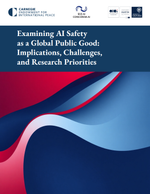Helen R Fryer, Matthew Baylis, Kumar Sivam and Angela R McLean
Proceedings of the Royal Society B vol. 274 no. 1617 1497-1503 DOI: 10.1098/rspb.2007.0353
View Journal Article / Working PaperAlthough no naturally infected sheep with bovine spongiform encephalopathy (BSE) has ever been discovered, it remains possible that BSE once infected the UK sheep population, has been transmitted between sheep, and is still present today. We constructed a mathematical model to assess the current maximum theoretical exposure to consumers from BSE-infected ovine material and to estimate the risk reduction that could be achieved by abattoir-based control options if BSE-infected sheep were ever found in the national flock. We predict that, if present, the exposure to consumers from a single BSE-infected sheep would be high: one sheep, close to the end of its incubation period, is likely to contribute 10–1000 times more infectious material than a fully infectious cow. Furthermore, 30% of this exposure comes from infectivity residing in lymphatic and peripheral tissue that cannot be completely removed from a carcass. We are 95% confident that throughout Great Britain, no more than four sheep flocks currently harbour an ongoing BSE epidemic. However, since the exposure from a single infected sheep is high, the annual human exposure from four ‘typical’ BSE-infected flocks could be considerable. Small reductions in exposure could be achieved by strategies based on tissue testing, a 12-month age restriction or expanded definitions of high-risk tissues. A six-month age restriction is likely to be more effective and genotype-based strategies the most effective.




